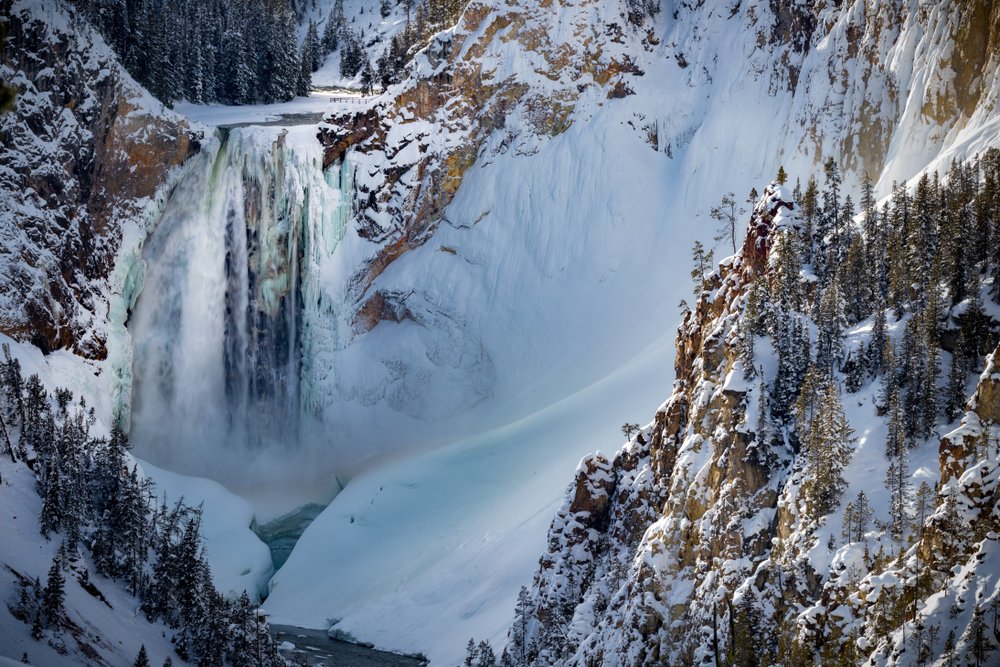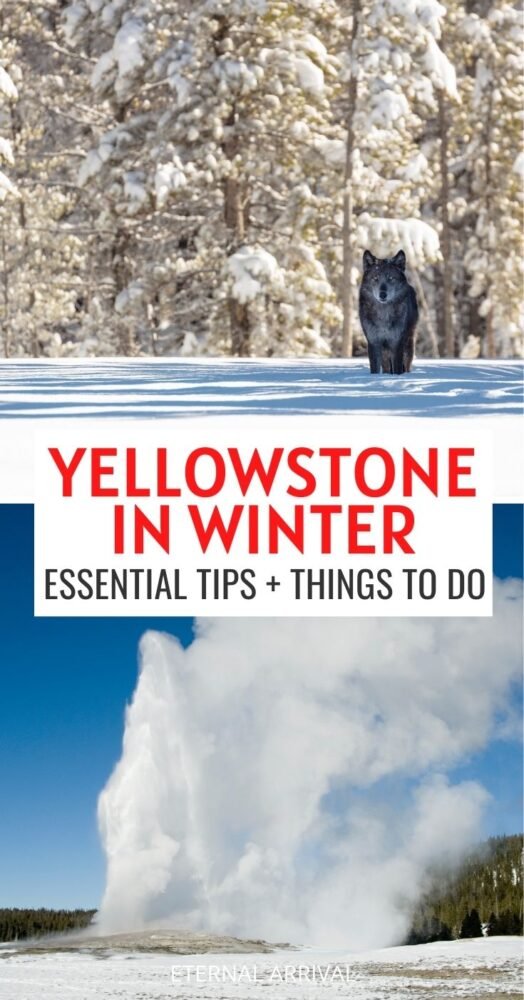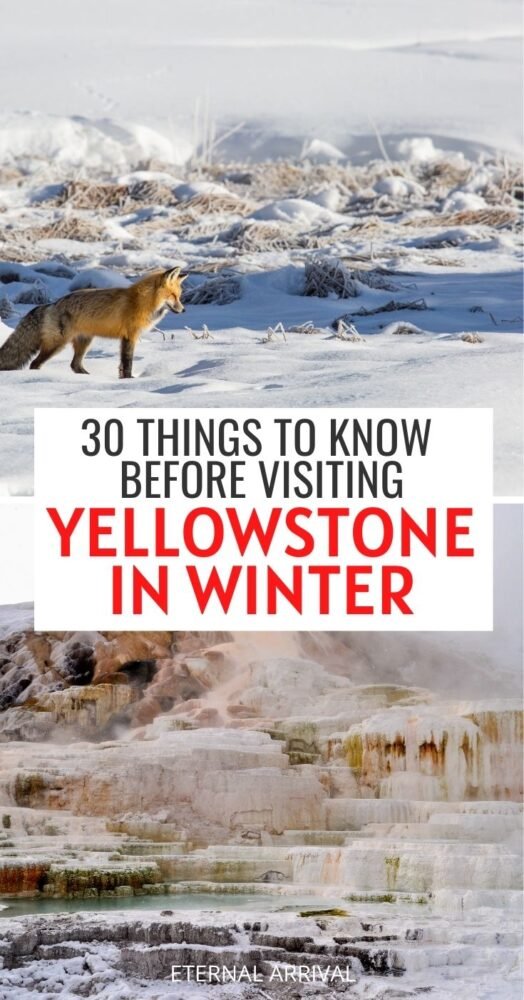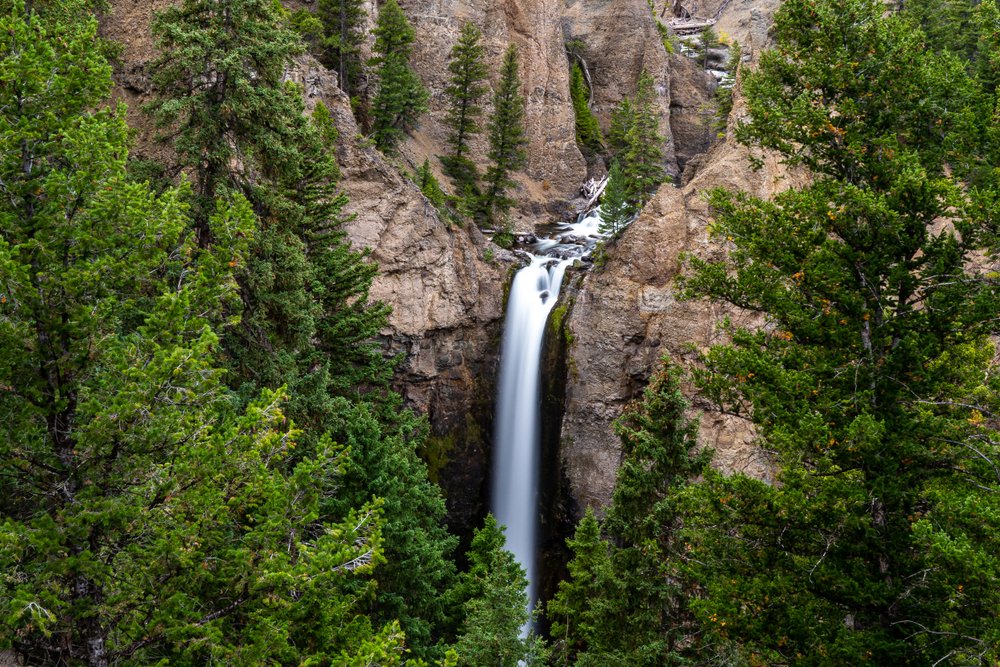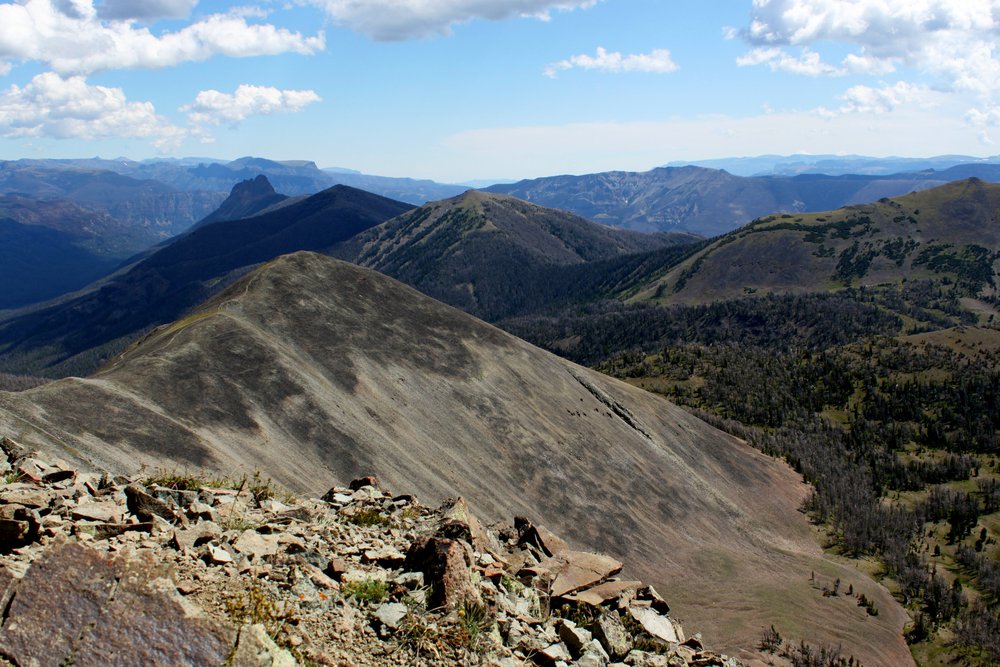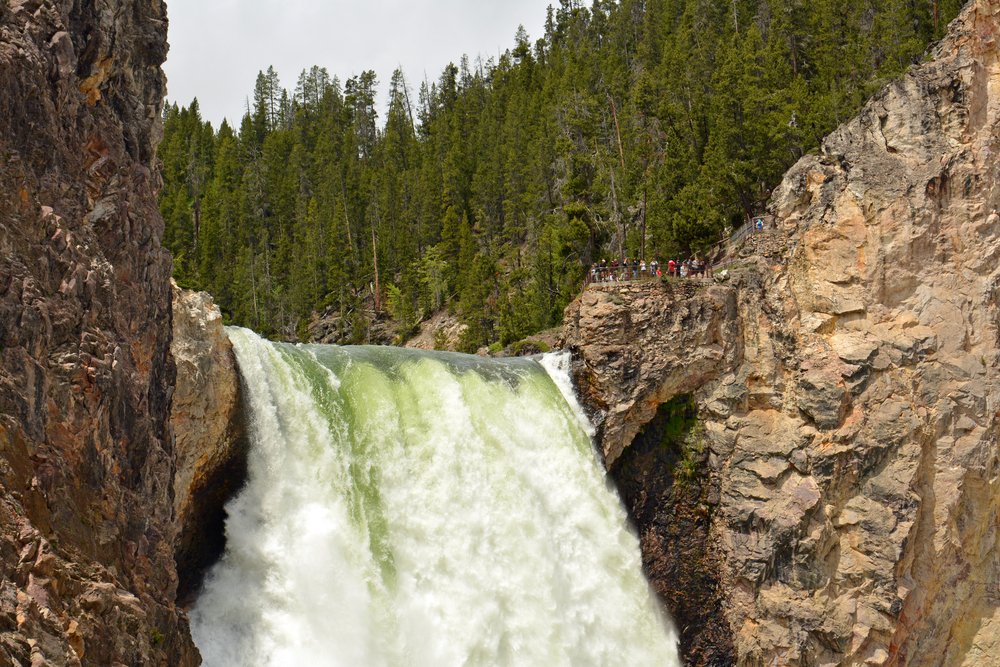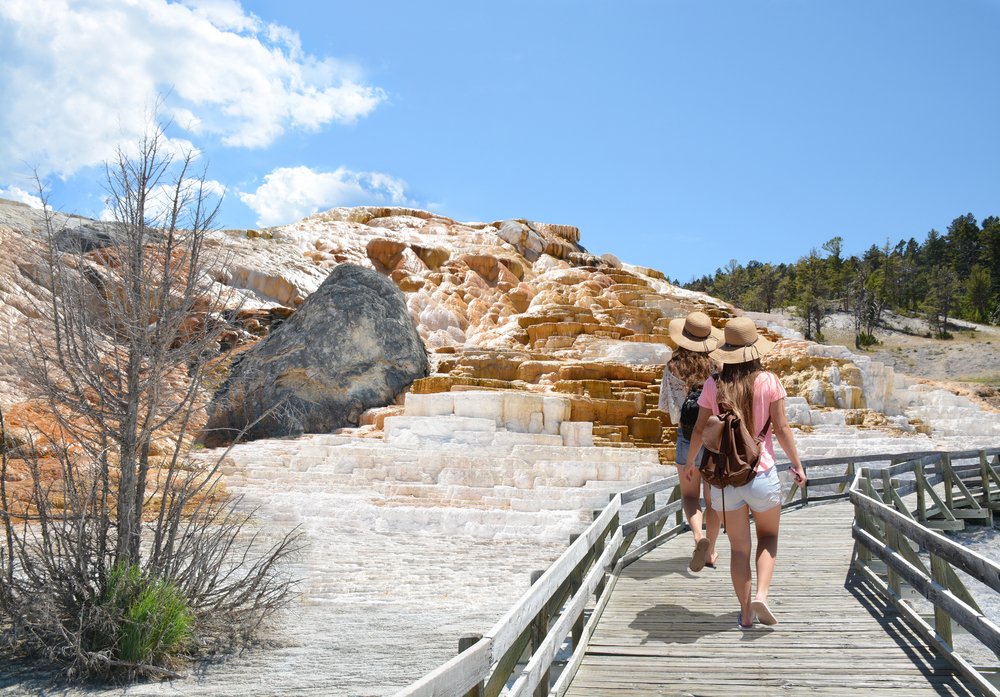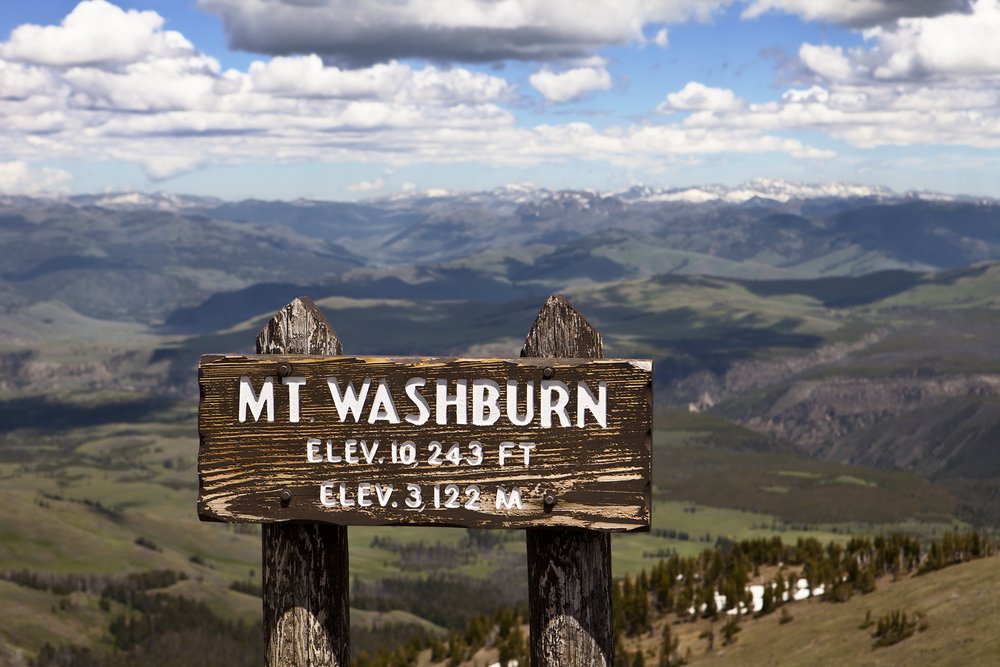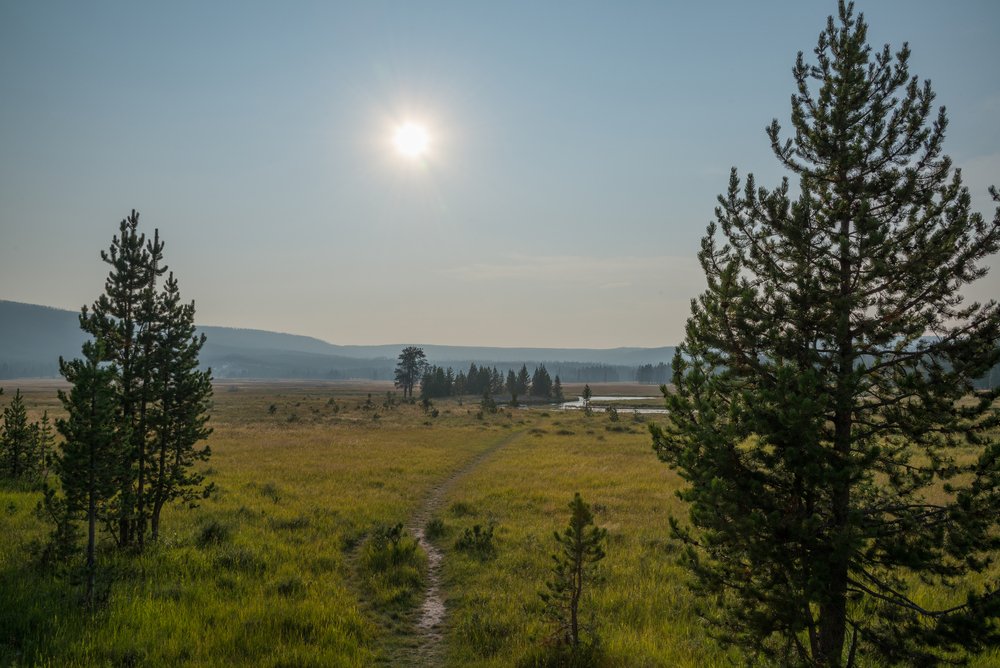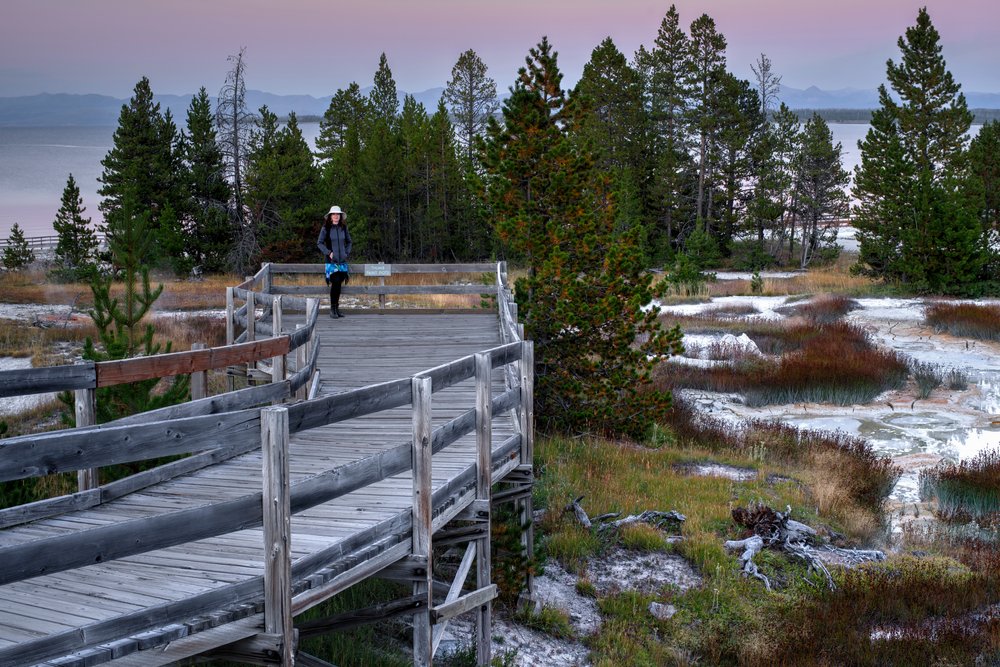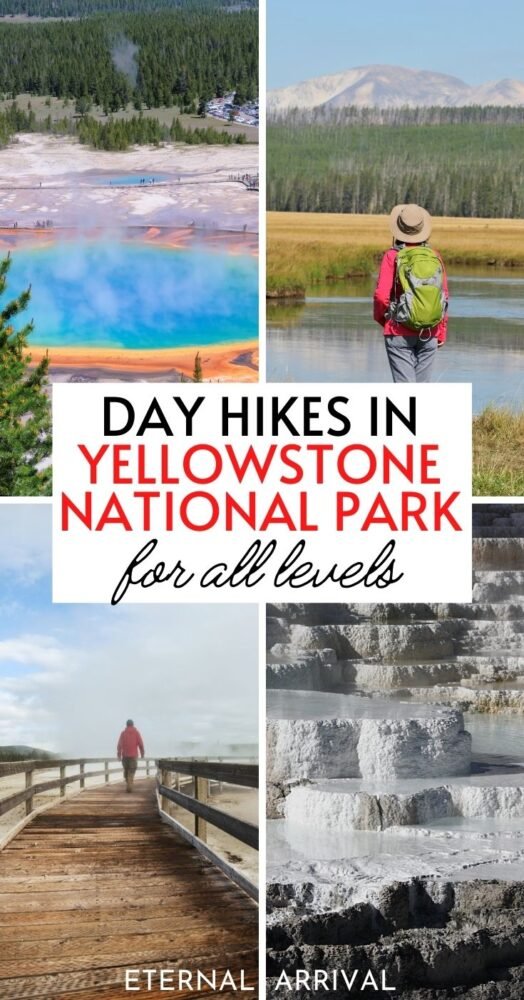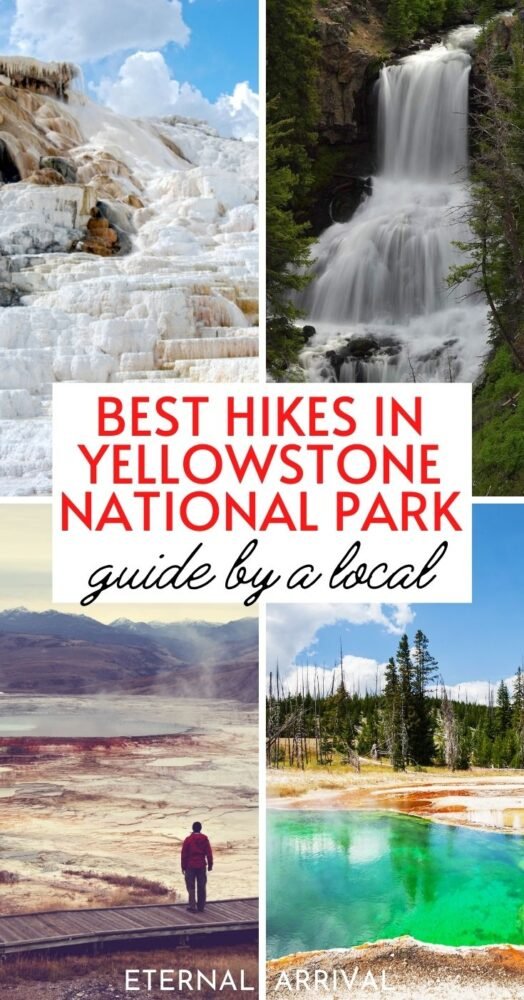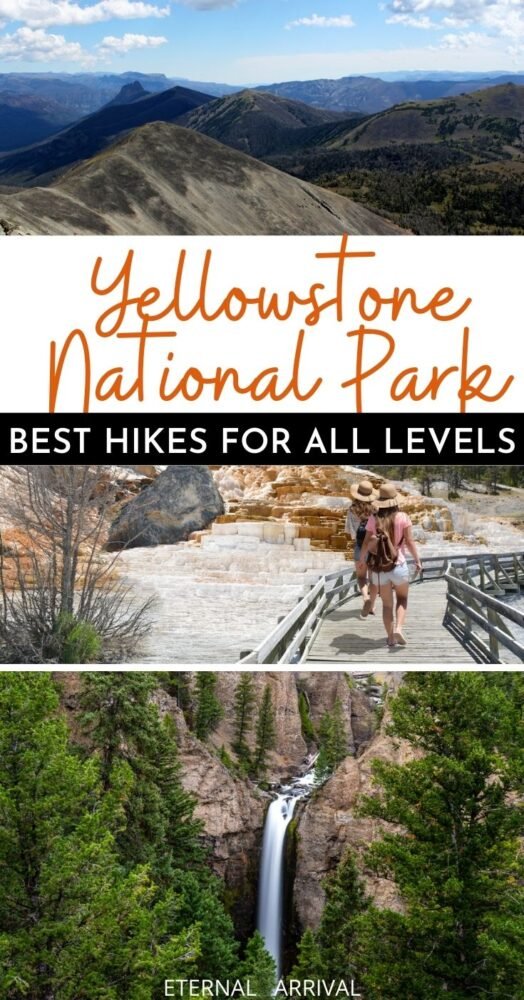Yellowstone National Park becomes a wintery wonderland by mid-fall. The peaks are heavy with snowpack, bear hunker down with their full bellies, and the rivers steam at the touch of the frosty air.
As the temperatures begin to drop, the summer crowds disperse and Yellowstone in winter quiets down.
While normally you have to go back-country to get away from the crowds, in winter, Yellowstone front-country becomes a place to seek solitude and silence.
Yellowstone in Winter FAQs
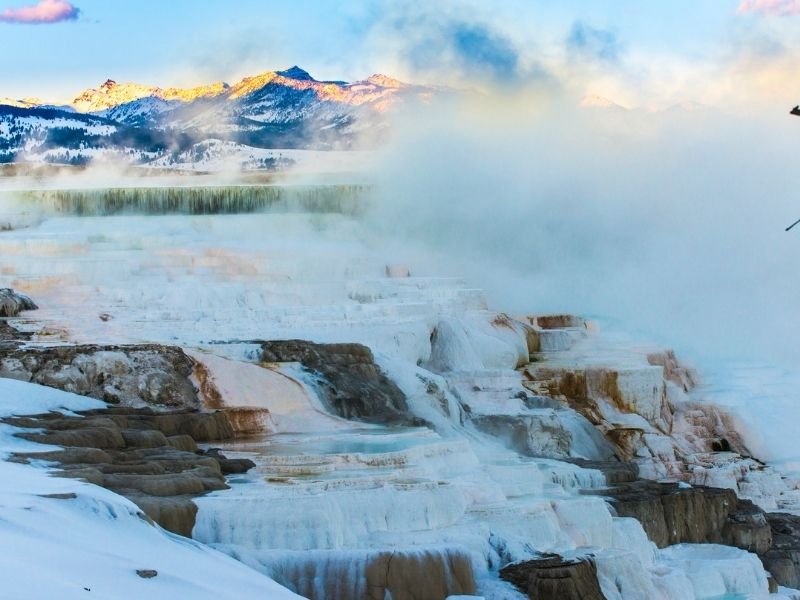
Quite a lot! While most of the park is closed to private vehicles, snowmobiles and snowcoaches will take you to many of the most scenic parts of Yellowstone without the crowds. Cross-country skiing and snowshoeing are two of the most popular winter activities in Yellowstone, as well as wildlife spotting and wildlife photography.
Many of the lodges in the park itself are closed, with the exception of the Old Faithful Lodge.
Instead, I recommend staying in Jackson Hole or West Yellowstone.
For Jackson Hole, I suggest Wyoming Inn. This cozy inn features Western-style decor complete with a roaring fireplace, warm woodsy colors, rustic design touches, and large, modern rooms. Check photos and reviews here.
For West Yellowstone, I suggest the hip The Adventure Inn. This stylish spot has a minimalist style, with a Scandinavian sensibility mashed up against a woodsy edge. It’s like a Brooklyn loft and a mountain cabin had a baby: it’s beautiful. Check photos and reviews here.
Only through the North Entrance in Gardiner, MT leading to the Northeast Entrance — otherwise a snowcoach or snowmobile transit must be booked. More on that below.
Road Conditions and Seasonal Closures in Yellowstone in Winter

As Yellowstone National Park transitions into winter season activities, there are some important dates to keep in mind!
While certain roads close to private vehicles, others begin to open to over-snow transportation such as snowmobile and snowcoach – We’ll talk about these more in a bit.
Yellowstone Entry Price in Winter

The price to enter Yellowstone National Park in winter is the same as at any other time of year: $35 for private vehicles and $30 for snowmobiles, each granting 7 days of admission.
However, if you like National Parks, I highly recommend investing in an America the Beautiful pass! It gives you one year of free entry to all National Parks and other federally-administered protected areas (National Forests, National Seashores, etc. — over 2,000 sites!) for the low price of $79.99.
Plus, 10% of that goes back into the National Park Foundation to keep the land pure, beautiful, and accessible for all.
>> Buy your America the Beautiful annual pass online here! <<
Yellowstone Winter Opening Dates
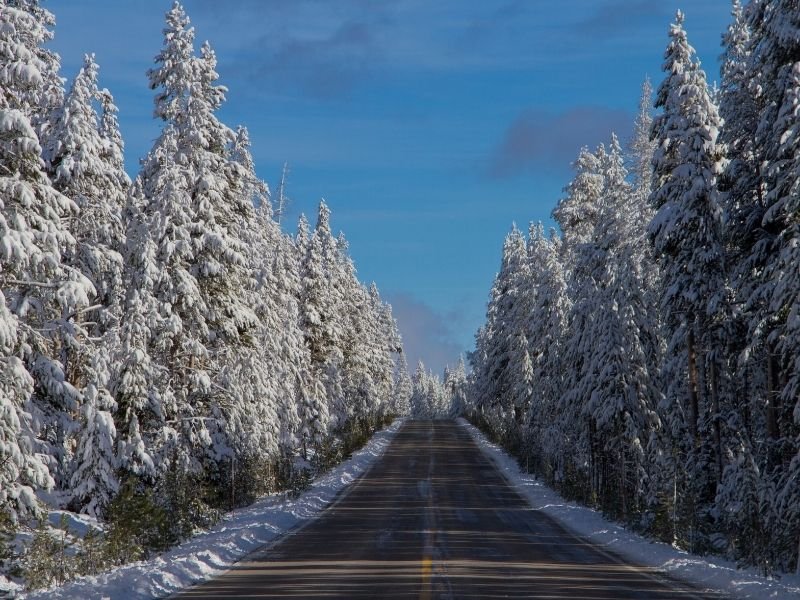
These opening dates apply to over-snow travel only. Over-snow travel includes snowmobiling, cross country skiing, snowcoach tours, and snowshoeing. It does not include personal private vehicles.
If you would like to drive your own vehicle into the park, you will need to use the North Entrance in Gardiner, MT — the only open road.
The road between the North Entrance and the Northeast Entrance remains open for private vehicles all year.
The following sections of road open mid-December for over-snow travel:
- West Entrance to Old Faithful
- Mammoth Hot Springs to Old Faithful
- Canyon Village to Norris
- Canyon Village to Yellowstone Lake
- Old Faithful to West Thumb of Yellowstone Lake
- South Entrance to Yellowstone Lake
- Yellowstone Lake to Lake Butte Overlook
Yellowstone Winter Closing Dates
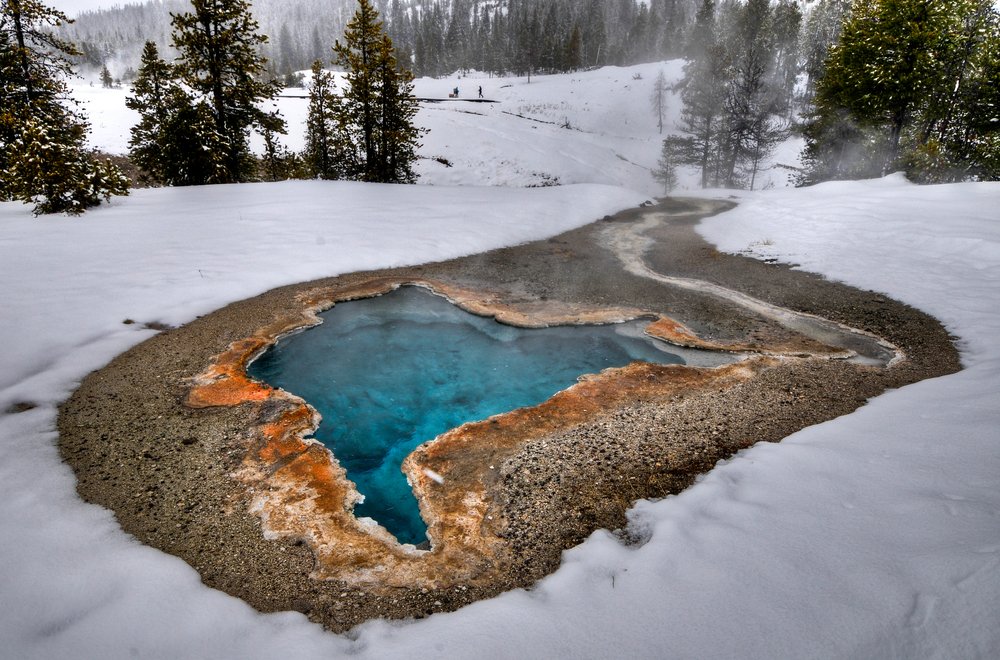
If you are planning to make a late winter trip to Yellowstone National Park, you will want to be aware of the winter closing dates for over-snow use.
The following roads close to over-snow travel in early March:
- Sylvan Pass
- Mammoth Hot Springs to Norris
- Norris to Madison Junction
- Norris to Canyon Village
All remaining roads close for over-snow travel, with the exception of the road between the North Entrance and Northeast Entrance, in mid-March.
Winter Road Conditions in Yellowstone
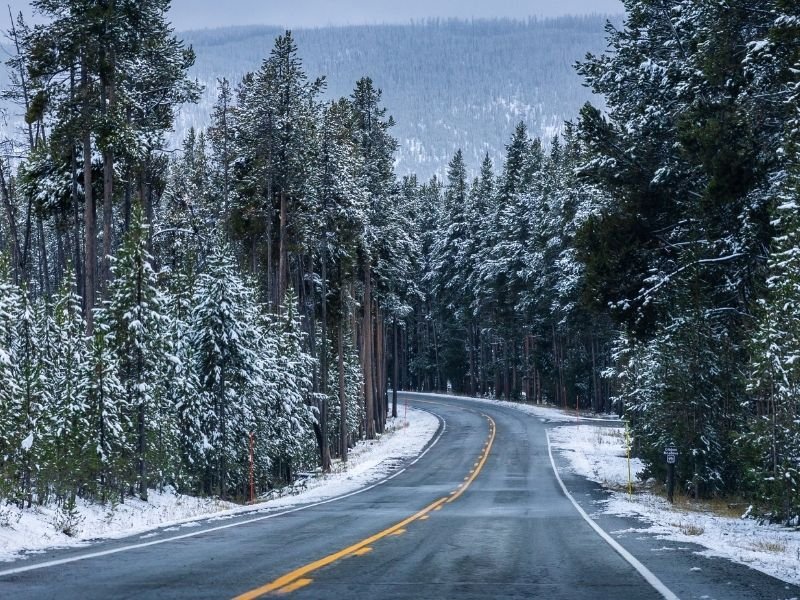
Always check on Yellowstone National Park’s official website for updated road conditions before traveling to the park. The weather can change quickly, and you’ll want to be prepared.
That means snow chains if you are driving the North-Northeast Entrance route, safety flares or triangles in case of a breakdown, and warm clothing / emergency blankets in case you are stranded for a while waiting for a tow.
When to Visit Yellowstone in Winter
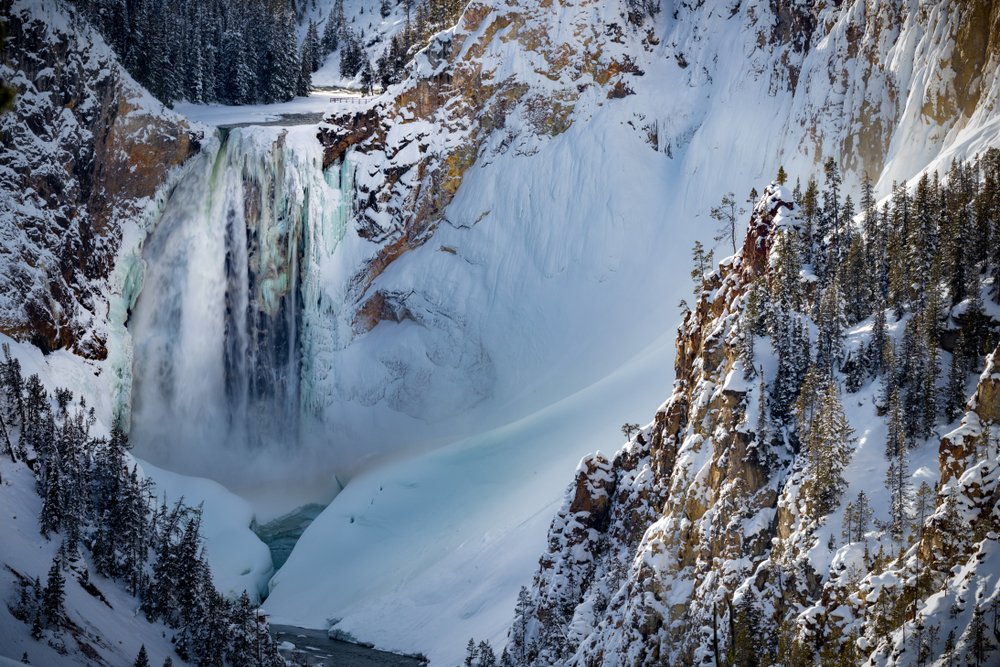
The best time to visit Yellowstone National Park for winter activities is between the end of December and the end of February. It’s one of my favorite National Parks to visit in December for good reason!
This is because it falls into the over-snow travel period but before the period ends, and it has the fewest crowds while also having some of the most stunning snow-covered landscapes you can imagine: white snow broken only by the beautiful kaleidoscope of the rainbow-hued geothermal pools in the ground!
Weather in Yellowstone in Winter

Yellowstone in winter can be summed up in one word: FREEZING.
Fun fact: The West Entrance recorded the park’s record low of -66°F in 1933. BRRR!
Here are the breakdowns for winter weather in Yellowstone and what to expect on a month-by-month basis from November through February.
November: Average high of 34° F and an average low of 13° F, with 12 days of rain/snow
December: Average high of 26° F and an average low of 4° F, with 13 days of rain/snow.
January: Average high of 28° F and an average low of 3° F, with 13 days of snow/rain.
February: Average high of 31° F and an average low of 4° F, with 11 days of snow/rain.
Getting Around Yellowstone in Winter
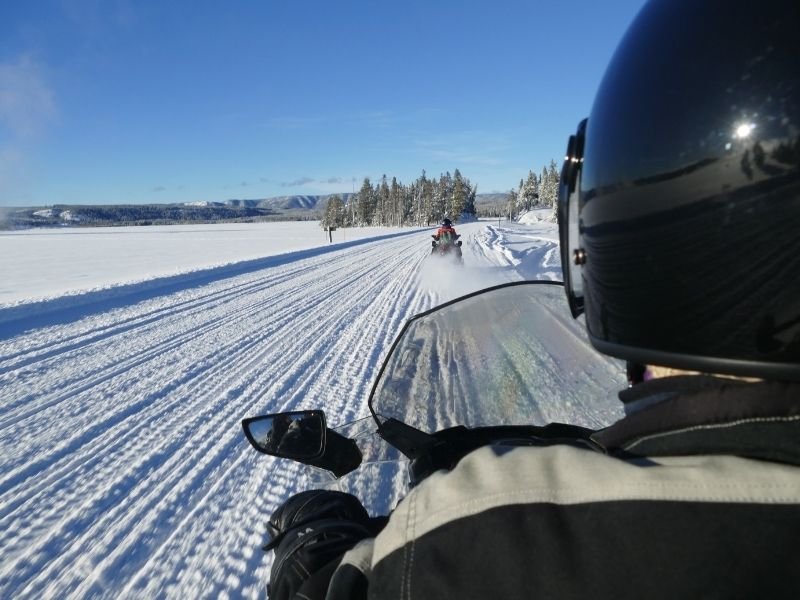
Traveling in Yellowstone National Park is a little different in the wintertime.
Some pre-trip planning is in order if you plan to visit Old Faithful, Canyon Village, Yellowstone Lake, or any other area of the park that is inaccessible by private vehicle.
If you want to explore these areas of the park during the wintertime, you will want to schedule a snowcoach or snowmobile tour well in advance of your trip date! These excursions are popular among wintertime visitors!
Booking an Over-Snow Tour

You have two options for over-snow travel in Yellowstone in winter: snowcoach and snowmobile. And they are very different!
A snowcoach is an enclosed vehicle with large tires capable of driving on the park’s snow-covered roads with ease. They have comfortable seats and large windows for viewing the snowy landscape.
Snowcoach tours are great for families or visitors who want to sit back and relax while exploring the park with a knowledgeable professional.
For those with an adventurous spirit, a snowmobile tour will offer a thrilling Yellowstone winter experience!
Although driving speeds are limited to 25 mph in the park, riding a snowmobile past herds of bison and elk is exhilarating and unlike any other scenic tour. The best part is, the professional outfitters will make sure you are geared up to stay warm throughout the entire ride!
Now, let’s talk about what kind of fun winter activities there are in Yellowstone!
Overwhelmed by Visiting Yellowstone National Park in Winter?

Admittedly, Yellowstone is not the easiest national park to visit in the winter if you are used to being able to drive to different points and not have to worry about over-snow transportation.
If reading this far into the post has gotten you feeling a bit anxious and overwhelmed by all the planning that needs to go into a successful Yellowstone winter trip, I strongly recommend opting for a 4- or 5-day guided tour which will handle all the logistics.
This 4-day tour includes transportation from Jackson, Wyoming on the beginning and end of the tour as well as 3 nights of accommodation in West Yellowstone, ending in Jackson Hole.
It includes the following: wildlife sighting opportunities in Grand Teton National Park (keeping an eye out for wolves, elk, bison, moose, elk, bison, foxes, eagles, deer and more!), a snowcoach trip to see Old Faithful and other hydrothermal areas in Yellowstone National Park, a horse-drawn sleigh ride into the National Elk Refuge, boardwalk hikes through Fountain Paint-Pots and Mud-Pots, and lots of stops for beautiful winter photography opportunities.
Check the itinerary and more details of this 4-day Yellowstone and Grand Teton winter trip!
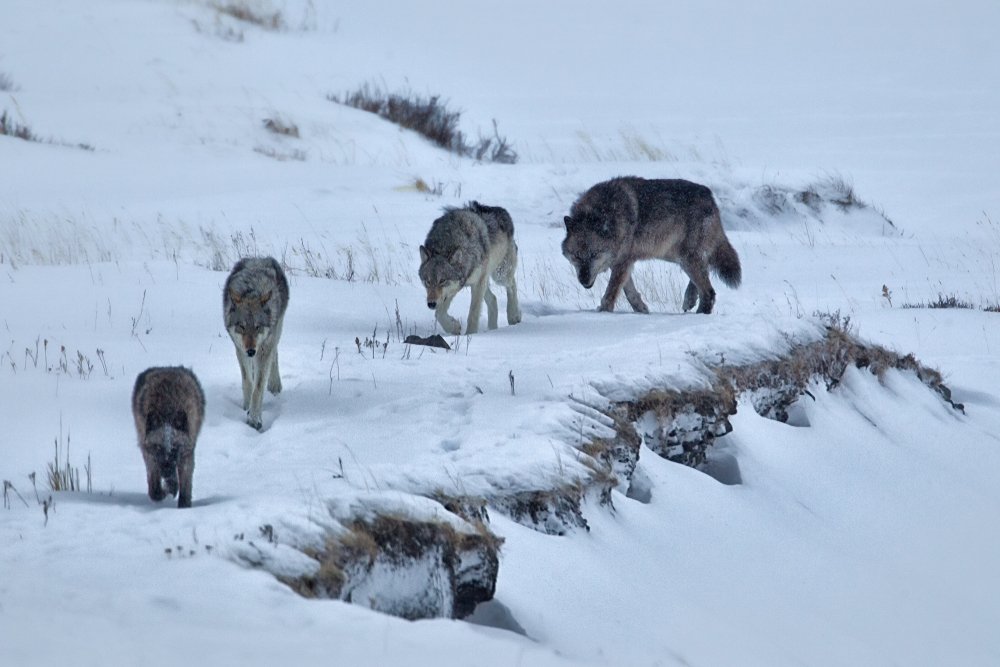
Another option is this 5-day wildlife-focused tour which covers Yellowstone extensively. It starts in Bozeman, Montana (a wonderful place to stay in winter!) and includes 4 nights of accommodation, dropping you off in Bozeman on the return.
It includes the following winter activities: a day of wildlife sightings (keeping an eye out for both bald and golden eagles, white-tailed deer, coyotes, elk, bison, bighorn sheep, pronghorn antelope, and more), visiting Old Faithful via chartered snowcoach and also seeing Fountain Paint Pots along the way, Cooke City for the best place on earth to see wolves (located in the northern range of Yellowstone), and wolf winter safaris in Lamar Canyon with experienced wildlife guides and wolf researchers.
Check the itinerary and read more details about this 5-day Yellowstone wolf and wildlife focused tour!
Cross Country Skiing in Yellowstone
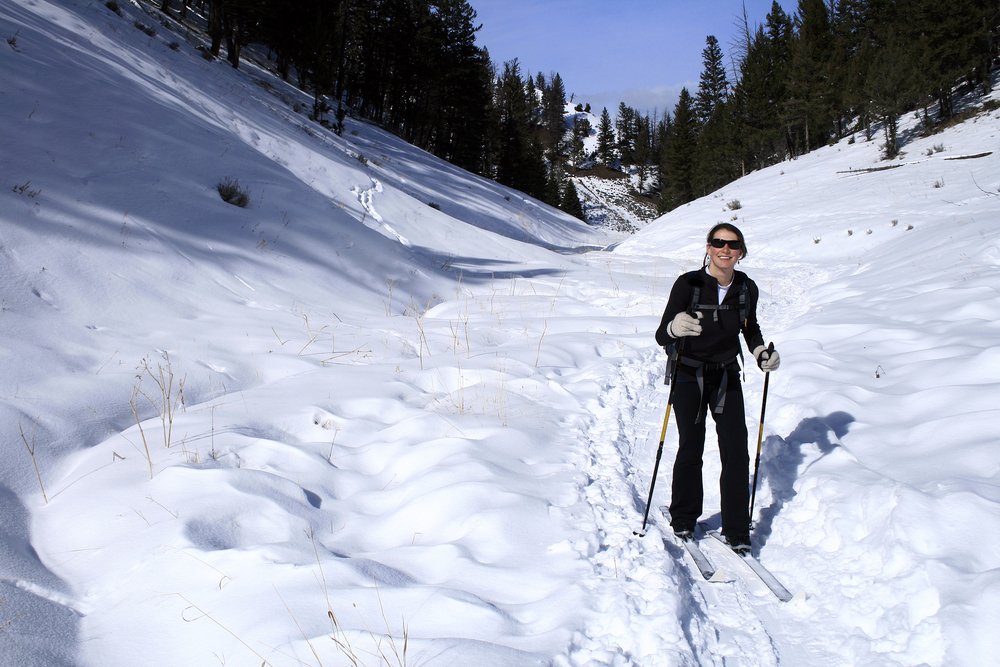
Yellowstone National Park is full of wonderful ski trails from groomed front country loops for beginners to remote backcountry routes for seasoned and highly-experienced skiers!
If you’re interested in getting out into nature on some cross country skis, these are our favorite beginner-friendly trail options for getting out into the nature of Yellowstone National Park in winter!
Upper Terrace Loop Ski Trail
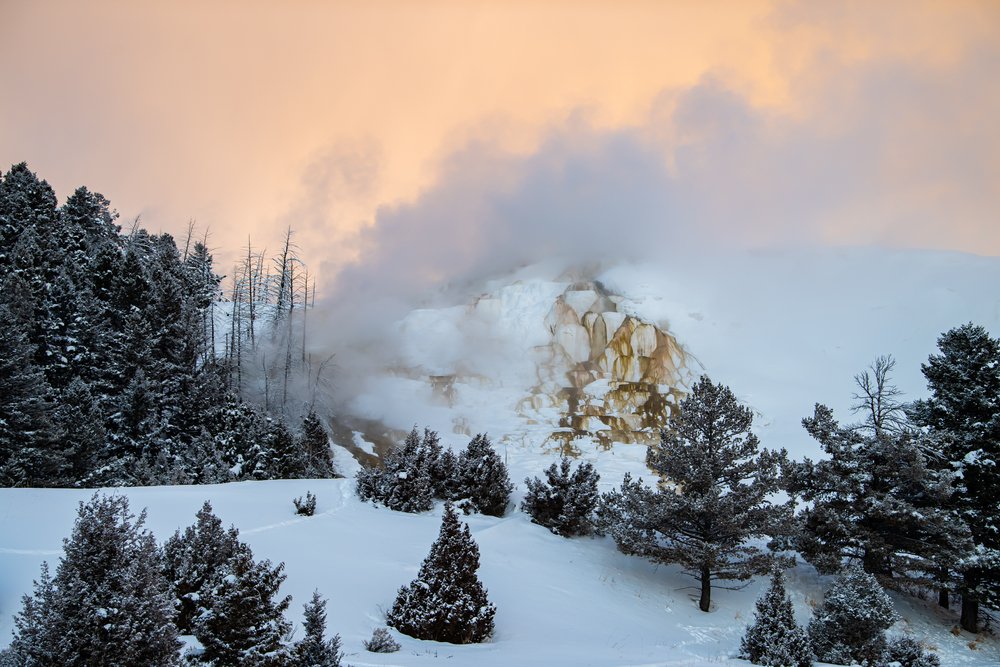
A little spontaneous? This trail is great for last-minute trips into Yellowstone National Park in winter.
Since you can drive to the trailhead in your personal vehicle without booking over-snow transportation in advance, there’s often minimal planning involved.
The 1.5-mile loop is routinely groomed, but it can be considered difficult for beginners due to the few steep sections.
Enjoy this scenic trail around the upper terrace geysers and hot pots in Mammoth’s hydrothermal area. It takes about 1-hour to complete this loop, but leave time to take photos with the geysers, including Mammoth Hot Springs, Canary Spring, and Orange Spring Mound!
Black Sand Basin Trail
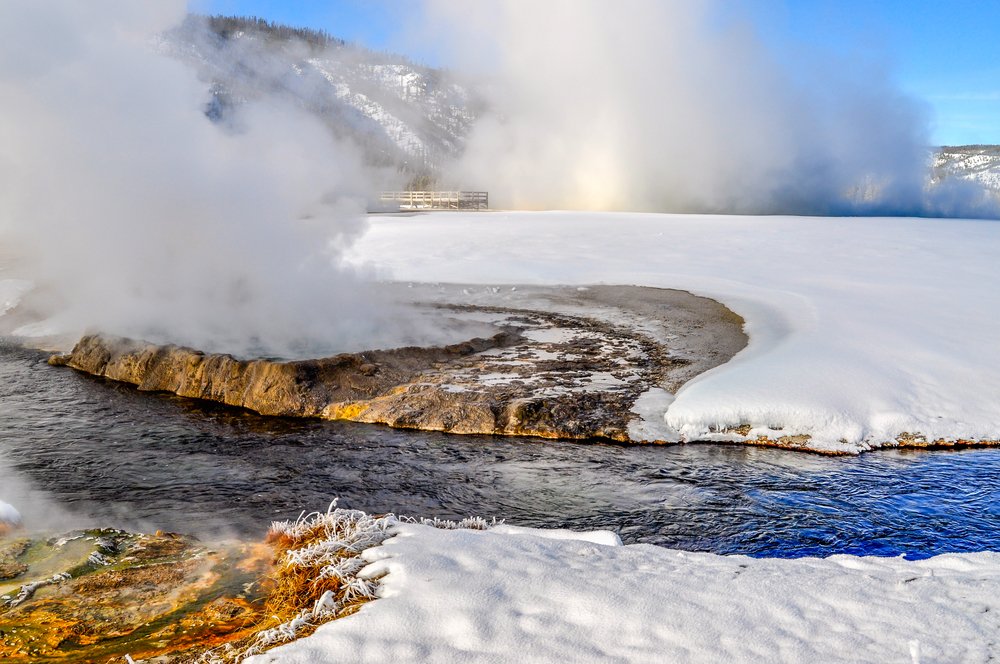
The Black Sand Basin Trail is a great option for beginners or experienced cross country skiers!
This groomed ski trail begins at the Old Faithful Visitor Center and heads to the Upper Geyser Basin Trail. The 4-mile trail will take about 3-hours to complete as you glide past the many steaming hydrothermal features.
This ski trail is located near Old Faithful and is inaccessible to private vehicles during the wintertime.
Advanced planning is needed to accommodate for over-snow transportation.
Blacktail Plateau Ski Trail
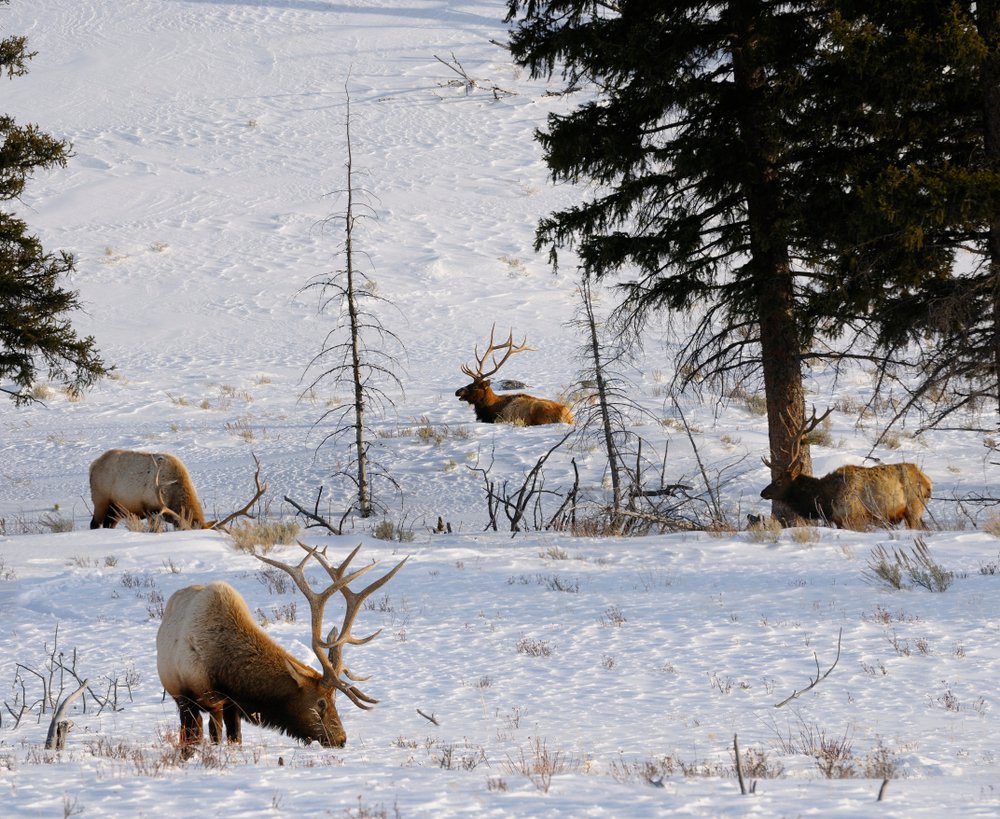
Were you hoping to encounter some wildlife while skiing in Yellowstone in winter? Cover some ground on the Blacktail Plateau Ski Trail to spot bison, elk, and maybe a wolf pack in the distance!
This trail has a few challenging sections and stretches 8-miles with a trailhead on both ends.
It is common for skiers to park one vehicle on both ends of the tail or only ski in a few miles before turning around toward the trailhead. Either way, know your experience level and make a plan before hitting the trail.
Cross Country Ski Rental
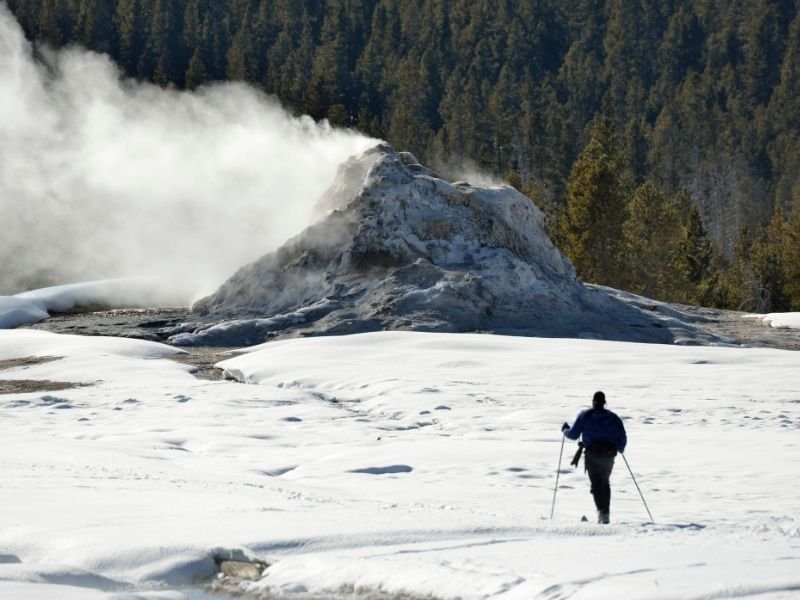
Forgot to pack your cross country skis, or don’t know if you want to make the investment in your own pair just yet?
There are plenty of rental shops located in the towns of West Yellowstone, Gardiner, Big Sky, and Bozeman.
Stop by a rental shop or call ahead and they can outfit you with everything you need to experience Yellowstone National Park’s groomed cross country ski trails!
Snowshoeing in Yellowstone
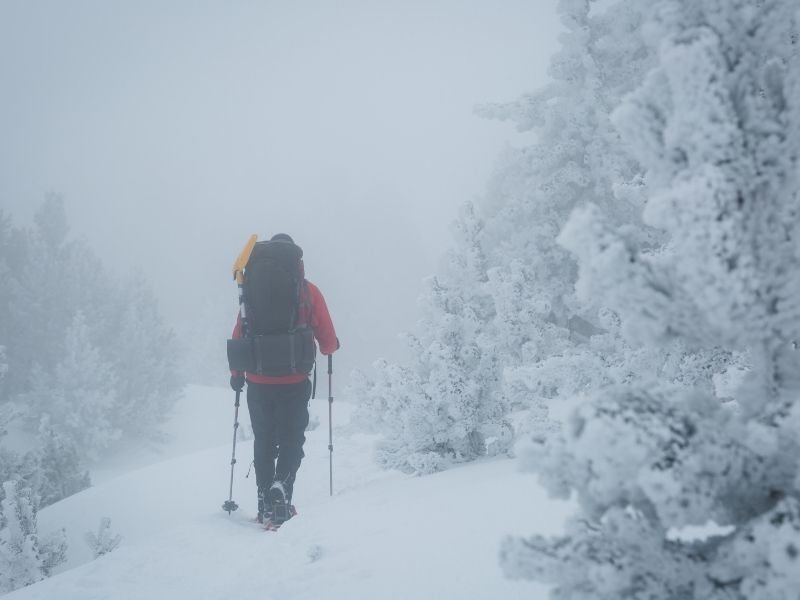
For those looking to take the trails a little slower, snowshoeing is a great option!
Snowshoes and trekking poles can be rented at many of the same outfitters offering cross country ski rentals, so no worries if you couldn’t bring your own along.
Many ski trails in the park are also snowshoe-friendly. Just avoid walking on top of ski tracks whenever possible, as this makes it difficult for cross-country skiers to return (as they trace their tracks!).
Here are a couple of trails to try out.
Observation Point Loop Snowshoe Trail
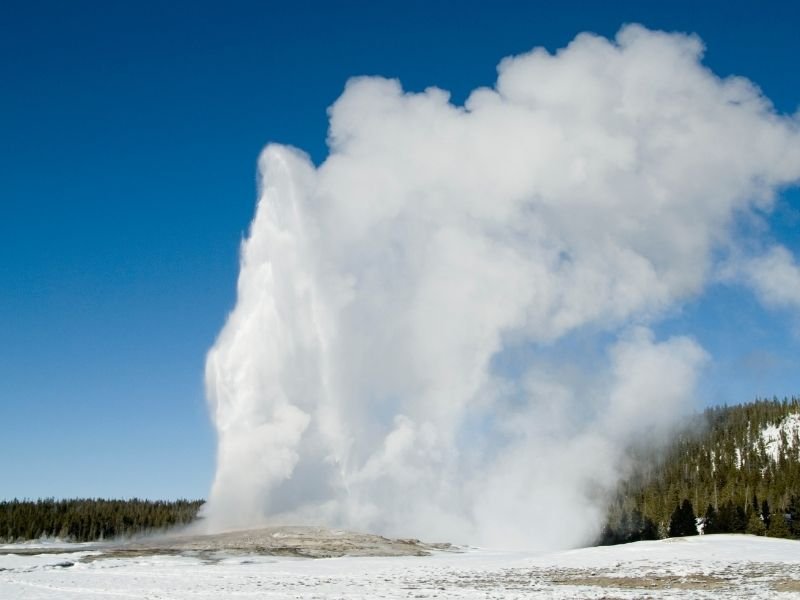
This trail is a must-do for anyone staying at the Old Faithful Lodge!
Conveniently located just past the Old Faithful Visitor Center, the Observation Point Loop Trail is a great way to watch the timely eruption of the world-famous geyser, Old Faithful!
Strap on your snowshoes because this 2 mile loop trail is closed to skiing. Along the way, you’ll catch views of other area geysers and maybe even some wildlife.
Tower Fall Ski Trail
For those looking for a longer snowshoe outing, the Tower Fall Ski Trail is a great choice.
Along this 5 mile trail, snowshoers will be rewarded with wintry views of Tower Fall and the Yellowstone River Canyon. Keep your eyes peeled, bison and wintering elk frequent these areas!
Winter users can park their personal vehicles in the parking area nearby Tower Junction and follow the unplowed road behind the gate.
The trail begins with a gradual uphill, which is great for warming up on chilly days! This trail is also popular for cross country skiing.
Winter Yellowstone Wildlife Viewing
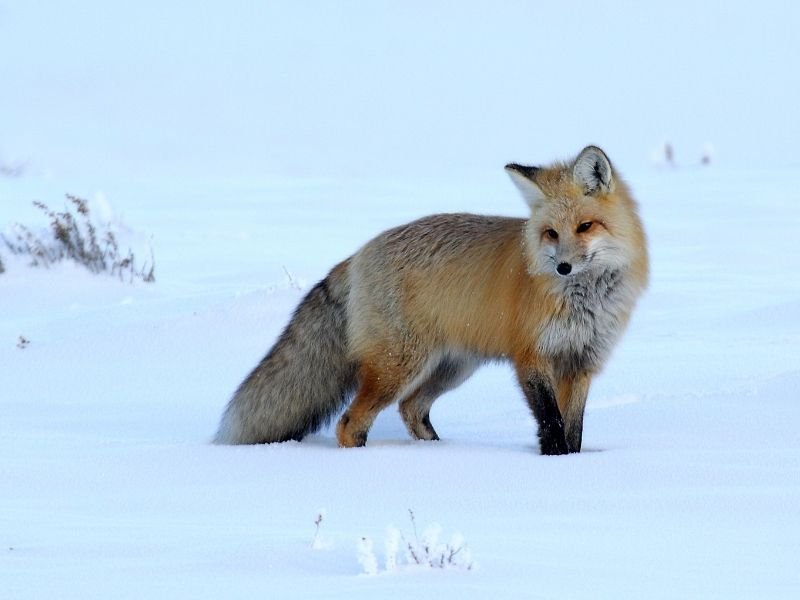
A lot of Yellowstone National Park’s wildlife remains active throughout the winter season.
Although bear hibernate in their cozy dens during the snowy months, wildlife such as elk, bison, wolves, fox, coyote and bald eagle can still be spotted!
If you are taking a private tour in a snowcoach or on snowmobiles, your guide will be sure to point out any wildlife in view.
Wildlife Spotting Without a Tour
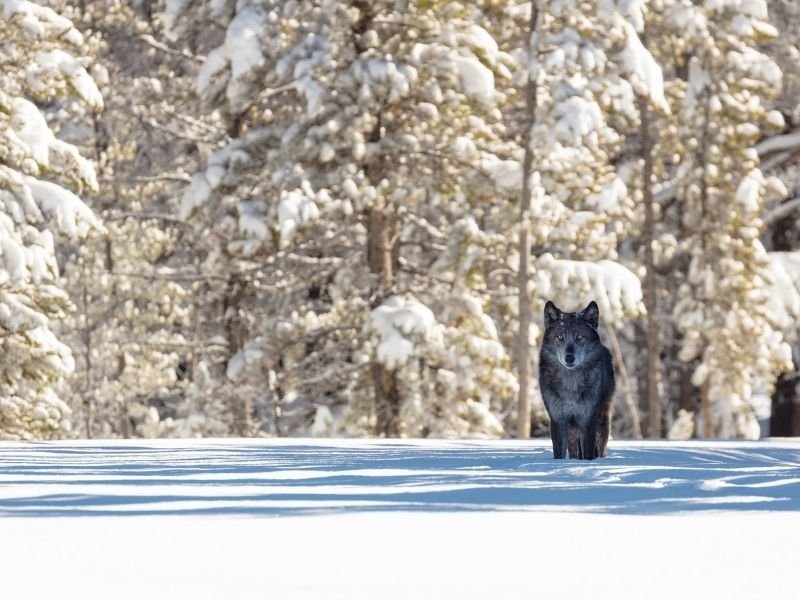
For those who are planning to take their own vehicles into Yellowstone, we have a few tips!
- Drive out toward the Lamar Valley with binoculars, hot beverages, and warm blankets. Find a nice spot where you can look out over the valley and start scanning! The Lamar Valley is famous for wolf sightings and a fresh blanket of snow often makes them easier to spot.
- In the wintertime, Mammoth Hot Springs becomes a popular spot for wintering elk to settle in. Spend some time in this area and count how many elk you can find!
- Bison can often be viewed along the drive to the Lamar Valley. If you see Bison as you drive along, be sure to only stop in designated pullouts for safety.
What to Pack for Yellowstone in Winter
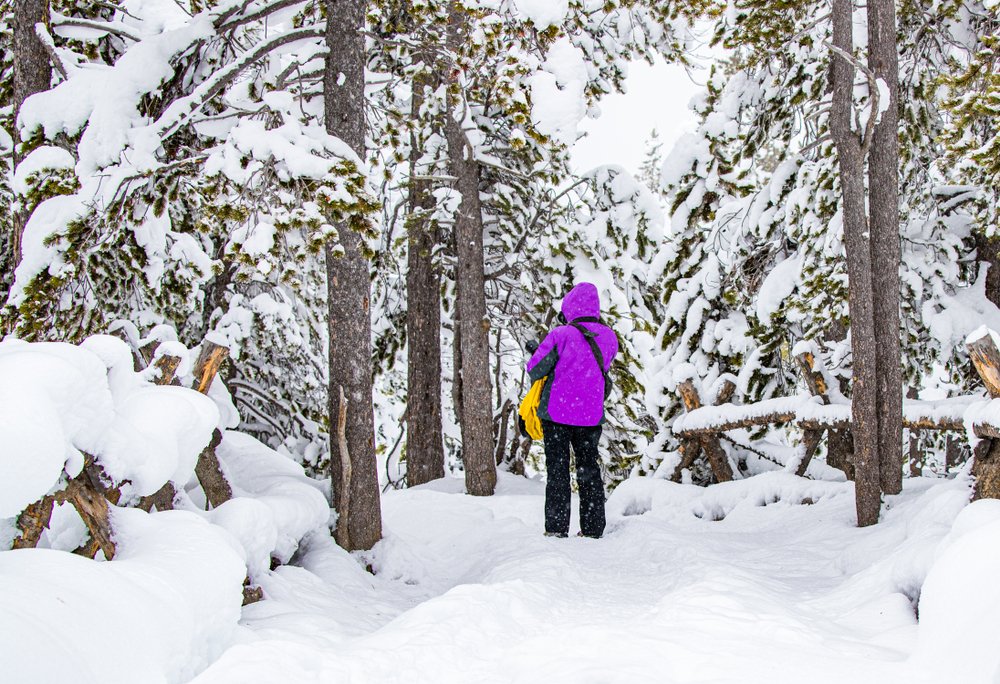
Waterproof Parka: In the snowy weather and freezing temperatures of Yellowstone in winter, you’ll want something like this wonderful North Face parka. It’s pricy to be sure, but it comes with a lifetime guarantee (which I’ve tested by sending in my zipper to be fixed after four years of use and abuse cycling in it all winter long – my jacket came back looking like new!).
I’ve had this one for ten years and it’s held up beautifully from everything to biking in NYC in winter to visiting north of the Arctic circle in Tromso and Abisko. It’ll certainly do you just fine in Yellowstone National Park in winter!
>>> Get yours here! <<<
Waterproof Pants: If you’re doing any winter hiking, skiing, snowshoeing, snowboarding, etc. (basically, anything more intense than just a stroll around town) you’ll want waterproof pants: trust me, jeans just won’t do when you’re dealing with snow this deep.
Snow Boots: For snow boots for walking around Yellowstone National Park as well as whatever town you’re using as your base, I suggest these cute and cozy Sorel boots for women, which are waterproof and warm but also have plenty of traction. Add some Yaktrax to the bottom for grip on icy surfaces and pathways. These are a godsend!
Warm Leggings: You have two options for ultra-warm leggings in winter – fleece-lined for people with sensitive skin like me, and merino wool for people who don’t find wool itchy like I do. I own several pairs of these fleece-lined leggings in a variety of colors (I have black, gray, and maroon). I wear these underneath my waterproof pants in the snow. For people who like wool, merino wool leggings are the way to go – the absolute warmest you can get!
Fleece-Lined Knit Hat: I live in several different colors of knit hats in the winter. Since your jacket is likely a dark or neutral color, it’s fun to liven up your look (and photos) with a selection of colorful beanies. I like a snug knit hat lined in fleece and with a pom pom that does absolutely nothing to add warmth but tons to add cuteness!
Thermal Top Layer: Again, this’ll depend on if you like wool or not. I don’t, so I go for thin performance thermals like this Heat Plus layer from 32 Degrees. However, if you’re a fan of wool, a merino wool base layer will keep you insanely warm and it won’t trap odors, meaning you can re-wear it several times before it needing a wash — great if you like to pack light.
An Enormous Scarf: The bigger and thicker and more wrappable the scarf, the better. I tend to opt for bright, bold colors to liven up my look. I love these ones — they’re cheap and feel soft like cashmere but aren’t pricy (or in my opinion, itchy!) like it!
Touchscreen Friendly Gloves: Taking off your gloves to use your phone when navigating on GPS, looking up something you’ve bookmarked, etc. is so annoying. Most gloves these days tend to be touchscreen friendly, but check before you buy. These gloves are adorable, touchscreen-compatible, and affordable.
Waterproof Gloves: You’ll also want to layer waterproof gloves over your touchscreen gloves if you’re snowshoeing or cross-country skiing and generally out and about a lot in the snow when you can’t put your hands in your pockets.
Headlamp (and Extra Batteries): Yellowstone National Park in winter can get dark early — and quickly — due to the early sunset time plus the mountains making it get darker even before that. Bring a headlamp in case any hikes take longer than expected! This Petzl headlamp is highly-rated and affordable.
Waterproof Backpack: You’ll want to keep your belongings dry, especially if you’re doing long hikes in the snow or freezing rain. Bring a waterproof backpack — you won’t regret it, especially if you’re carrying pricy camera equipment.
Snowshoes (optional): Many trails in Yellowstone in winter will require proper snowshoes (different than snow boots!) and poles if you want to do some winter trekking. You can also rent them, but they’re pretty cheap to buy and will last you for future winter trips!
Camera: You’ll want a camera to capture all that Yellowstone winter beauty. I use and love my Sony A6000! It’s mirrorless, so it’s lightweight and perfect for a high-quality camera that won’t weigh your pack down. Bring extra batteries as they burn out faster in the cold.
Battery Pack: Cold weather depletes cell phone batteries insanely quickly, so if you’re using your cell phone as your primary camera and navigation device (and who doesn’t these days?) you’ll absolutely want the ability to power up without a wall outlet while you’re out enjoying nature. I rely on an Anker battery pack to keep all my devices charged in the cold — and as a blogger who takes frequent winter trips to the Arctic and beyond with way more gear than a normal person needs, it’s served me very well!
Cooke City Excursions

Cooke City is a fun destination for self-guided winter trips into Yellowstone National Park. Here, winter is the primary season!
It’s not uncommon for folks to be snowmobiling in the surrounding national forest area into late June or even July!
If you’re planning on spending the morning searching for wildlife in the Lamar Valley, Cooke City makes a great place to enjoy a hot meal around lunchtime.
***
Bundle up and enjoy your winter adventure into Yellowstone National Park!
Pin This Guide to Yellowstone in Winter
Emily is a freelance travel and outdoor recreation writer from Big Sky, Montana. Her adventurous spirit has led her to the high peaks of the Sierras and the largest wilderness areas in the lower 48. When she’s not writing, Emily can be found backpacking, road tripping to outdoor destinations, climbing, or rowing whitewater.
